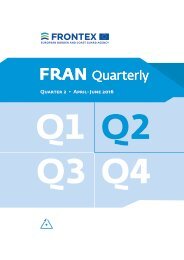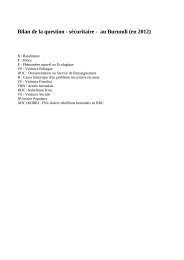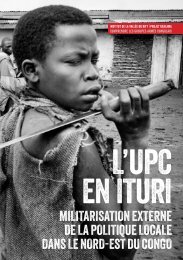You also want an ePaper? Increase the reach of your titles
YUMPU automatically turns print PDFs into web optimized ePapers that Google loves.
MUHAMED SABRY<br />
army’s previous lack of familiarity with Area C has caused major difficulties<br />
in pursuing gunmen because they are better aware of the terrain. In general,<br />
Ansar Beit al-Maqdis has used the geography of the Sinai Peninsula to considerable<br />
advantage.<br />
GROUP IDEOLOGY<br />
The core driver for IS in Sinai is a spirit of revenge, which is closely linked with<br />
Bedouin cultural feelings of neglect and oppression in their past dealings with<br />
the Egyptian regime. Bedouin culture requires a sense of revenge, even if it<br />
involves multiple generations. It is also very protective of land, homes, women,<br />
and property. Whenever police storm Bedouin houses, it is considered a violation<br />
of these sanctities, feeding back into the narrative of retaliation and revenge.<br />
Muslim Brotherhood rule after the January revolution was considered the<br />
golden era for jihadist groups in Sinai with regard to their ability to spread<br />
and grow in both economic and armed strength. Religion-based extremist<br />
ideologies have arrived through foreign fighters to add to the mixture, leading<br />
to more violence in Sinai. As Egyptian authorities turned a blind eye to<br />
Sinai, sharia courts spread.<br />
FOREIGN FIGHTERS<br />
Besides the majority local Bedouin contingent, Ansar Beit al-Maqdis has<br />
drawn foreign fighters. These men are primarily motivated by ideology rather<br />
than revenge or economic issues. The Sinai smuggling networks have also<br />
played a major role in their induction into the fighting force, however.<br />
Foreign fighters come from a variety of geographical locations and backgrounds.<br />
Africans, predominantly from Sudan, Somalia, and Eritrea, make<br />
up one of the most important contingents, although most originally arrived<br />
in Sinai as part of a human trafficking network to smuggle them across the<br />
Egypt-Israel border into Israel to look for jobs. Human trafficking is one of<br />
the most important types of smuggling conducted in Sinai.<br />
While some do find work in Israel, many never reach the country, instead<br />
becoming targets for ransoming schemes. Individuals are shackled, tortured<br />
with electric shocks, beaten, and burned to death in attempts to force their<br />
parents to pay huge ransoms—as high as tens of thousands of dollars. Once<br />
the kidnappers receive the ransom money, the victims are sold to others, and<br />
the torture begins again. Others attempting to cross the border have died or<br />
been captured by Egyptian security.<br />
68






